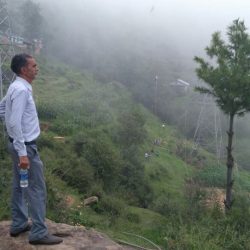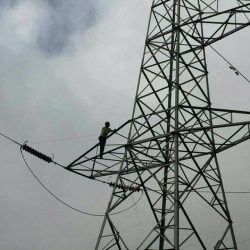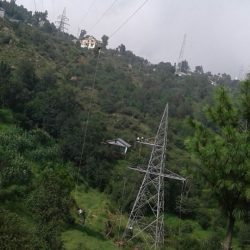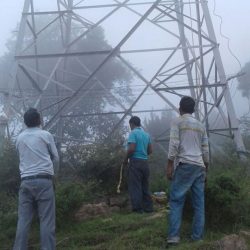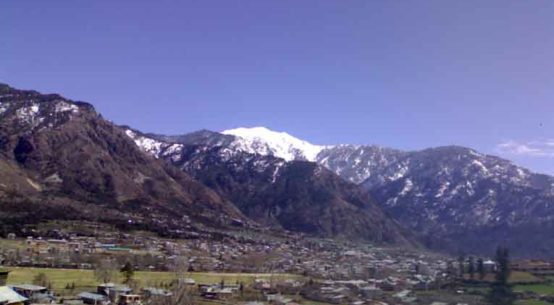
Power Scenario in Kishtwar & other areas of JK – Rajan Gandhi
Our State has enviable resources which have potential to transform our economy and boost socio-economic development not only of J&K state but of the whole Northern region. Among the major natural resources water will not only generate hydroelectric power for economic activities but also as a large source of state revenue. Power adequately has multiplier and trickledown effect which can give major flip to the other sectors of the economy in the state as compared to states of Punjab, Haryana, Delhi which are having limited water resources. Since, the other sectors of our state of the economy like agriculture are not strong enough to provide large revenue to our state; therefore, it becomes indispensable for the state to look at this sector as a vital source for future economic growth and development.
The Central Government has provided the right momentum to hydro electric power revolution by sanctioning power projects of 8941 MW against existing total generation of 3263 MW and the potential of state is to generate 20,000 MW. Government of Jammu and Kashmir has signed MoU with Central Government Ministry of Power under UDAY (Ujwala Discom Assurance Yojna) and as per this agreement we have to reduce AT&C losses to 15% by FY19-20,actual cost of supply and revenue realization has to be reduced to zero by 2019-20, 100 % feeder and distribution metering, feeder segregation for agriculture, installation of meters and smart meters and providing LED lamps. We have developed barely one-sixth of the hydropower capacity potential in the state in the last 70 years. Our state’s energy demand has gradually increased over the last five years at an annual rate of about 5% to 6%. The power requirement of the State is expected to reach 21,884 MU during 2021-22. But state’s performance on peak deficit has consistently remained poorer than the national average. Considering the State has already achieved significant level of electrification over the past 5 years, the remaining un-electrified households which are assessed at 3,56,000 as of December 2015, are targeted to be electrified by FY19.
JKPDD operates and maintains the intra-state transmission network having a transformation capacity of 4,050 MVA at 220/132 KV level and 4,503 MVA at 132/66-33 KV level along with transmission lines of 1,220 Ckt kms at 220 KV and 2,134 Ckt kms at 132 KV, spread over the entire stretch of the State. This is supported by the inter-state transmission systems totaling 2,648 ckt kms of transmission lines and a transformation capacity of 3,465 MVA. The JKPDD has proposed a capacity addition of 6,105 MVA and 2,293 Kms of transmission lines in the intra-state transmission systems which includes Samba-Akhnoor- Delina line via Moghal Road and 200 KV Alsteng -Leh Line during the period FY16 to FY19.The total funding requirement for the proposed additional intra-state transmission network by FY19 is approximately Rs 6000 crore.But with the present pace of work nobody can assure when these will be commissioned . The proposed investments are targeted towards increasing access, feeder segregation, reduction of technical and commercial losses etc.The proposed capacity additions by JKPDD will add 238 substations having 2,827 MVA capacity by FY19. Similarly, the addition in lines is expected to improve the HT:LT ratio which will result in reduction of technical losses. In order to transfer the power from point of generation to point of consumption effectively, the Transmission and Distribution infrastructure needs drastic development. T&D losses in the State are one of the highest right now. The high technical losses are due to existence of outdated distribution network and such system needs up-gradation and improvements. Commercial losses include theft, unaccounted and uncontrolled consumption of power beyond agreement load, poor status of consumer metering, unregistered consumers, lesser contract demand etc.The JKPDD is supposed to undertake significant initiative in improving the extent and quality of metering and ensure 100% consumer metering and deployment of the most modern techniques including prepaid/ smart metering etc by FY19. In addition to metering of all un-metered consumers, the metering plan proposed by JKPDD aims at replacement of all old, defective, faulty and electromagnetic meters with tamper proof static meters with advanced features.The JKPDD’s committed target was to install meters for all Government Connections in the State by March, 2017. However all these steps remain distant dream keeping in view the adverse conditions first due to floods in 2014 and 2015-16 due to indefinite strikes and the result is just above 50% achievement of targeted metering. But target of these investments along with additional necessary actions is to curb commercial losses to achieve the endeavor AT&C loss level of 25% by 2019 from existing losses of 64% (2015).
Our state’s power problems are further aggravated by the fact that our high share of hydro in the generation mix combined with outages in transmission and generation sources has led to seasonal variations in power availability situation in the State and has to rely on power purchases from Northern Region Grid to meet its requirements especially during winters and peak summers when demand peaks and own generation reduces drastically. As such, there remains a huge gap between the requirement and availability of energy. State owned thermal power plants mostly remain non-operational due to high per unit generation cost. However, diesel based generation units are used to meet the requirements of Ladakh region as emergency backup. Delays in planning and award of contracts of new projects are adversely impacting timely implementation of projects. The current status indicates that JKSPDC may not be able to meet its targeted capacity addition and there could be significant delays in commissioning of projects beyond the planned dates. The reduction in the existing installed available capacities, due to ageing of hydro electric projects , may further worsen the future availability of generation sources if the planned projects fail to take off. During winter season, the peak deficit increases to about 800 MW. JKPDD has made banking arrangements with neighboring states to meet this deficit. However, such arrangement is short-termed, JKPDD needs to prepare medium and long term plans to address this issue. Some of the suggested methods for optimizing the power purchase portfolio are analysis of the peak and off peak slot-wise daily demand pattern in light of increased availability and providing staff adequate trainings to use IT setup to achieve this target. This will help in arriving at the anticipated base and peak load , re-align the portfolio in the light of expected availability of renewable energy sources and achieve the targets under the amended Tariff Policy. But seriousness of the government can be gauged from the fact that entire teams right from AEE level to JEs of both Jammu and Srinagar State Load Dispatch Centre have been shunted out to other assignments and the new incumbents are unable to understand sale /purchase of the power from National Grid at right time , right price keeping in view peak load requirements resulting in loss to the tune of hundreds of crores recently but nobody is bothered in this cash starved state as money is of exchequer.
JKPDD has also requested 300 MW of bundled thermal power from NTPC. MoU with NTPC for exploitation of 396 MW of Coal Block has been signed. For success of the generation plan, it is important that the projects achieve their targeted commissioning schedules. Delay in timely DPR approvals/clearance, contracting and commissioning of the proposed projects are some of the key concerns for timely completion of the projects.Such projects are often faced with delays including those arising from floods, environmental/ hydrological/ ecological/ seismic compliances, land acquisition, access to project sites.
Central Government has done its part of job brilliantly and it is now up to the State Government how fast they can act and grab the opportunity. It’s high time officials in power instead of focusing on transfers at venal locations, start acting professionally and like NHPC, Power Grid Corporation and NTPC make JKPDD a force to reckon at par with international standards.
“They always say time changes things, but you actually have to change them yourself.”
Published in : Daily Excelsior
Author : Rajan Gandhi
